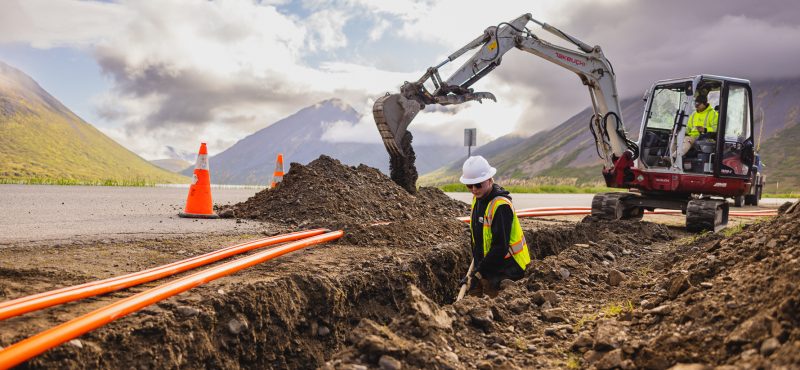What does it take to bring high-speed internet access to remote Alaska? Engineers, construction crews, fiber-optic cables—and archaeologists.
Why it matters: Alaska ranks last in broadband connectivity and is home to 227 Native Villages with rich historical roots. Expanding internet access shouldn’t come at the expense of these lands, which are rich in cultural and archaeological significance.
To balance connectivity with heritage preservation, internet providers—like GCI in Alaska—partner with archaeologists.
Preserving History, Connecting Alaska
During GCI’s broadband expansion project in King Cove, Alaska, on-site field archaeologist Wyatt Rowe worked to protect the area’s historical sites throughout the construction.
Zoom in: King Cove is home to the Aleut, or Unangax̂, people who have lived in the region for thousands of years. The village contains invaluable archaeological sites, artifacts, and sacred lands that reflect Unangax̂’s heritage.
Rowe on his role: “It’s incredibly important to have people out here to protect and preserve the Indigenous communities and their historical records. You can only dig an archaeological site once—if you don’t document it properly, it’s gone.”
Rowe, who worked alongside GCI crews in the remote fishing community, recently shared his unique perspective on his important work.
Dive deeper: The award-winning documentary, “Every Last Mile,” features archaeologist Wyatt Rowe and his work with GCI. It’s available to stream for free.
Get Involved in Bridging the Digital Divide
- Share your story of how high-speed internet makes a difference in your life or community to help advocate for better connectivity.
- Join our #ConnectivityCounts community so we can ensure that even the most remote communities, like those in Alaska, have the connectivity they need to thrive in today’s digital world.
